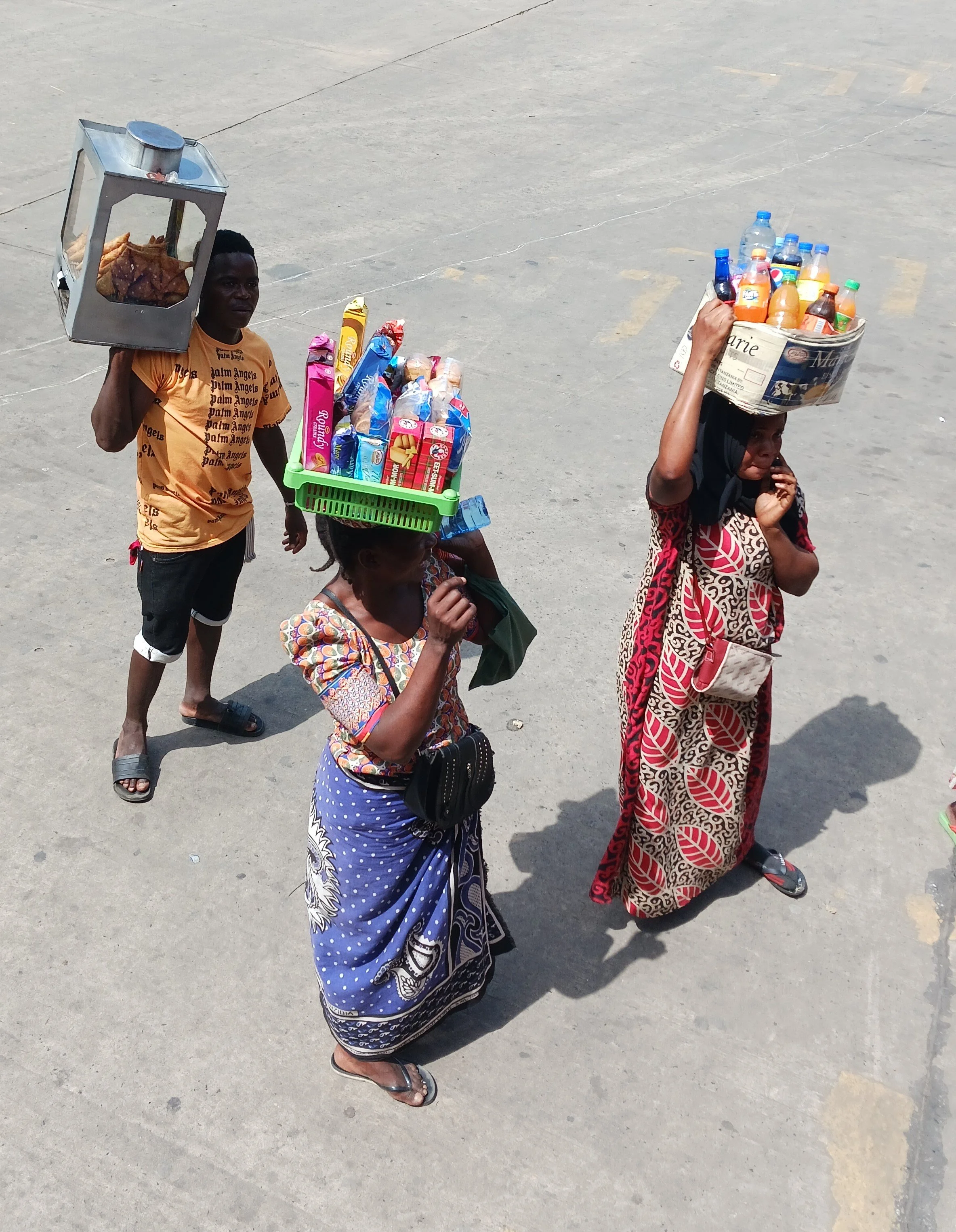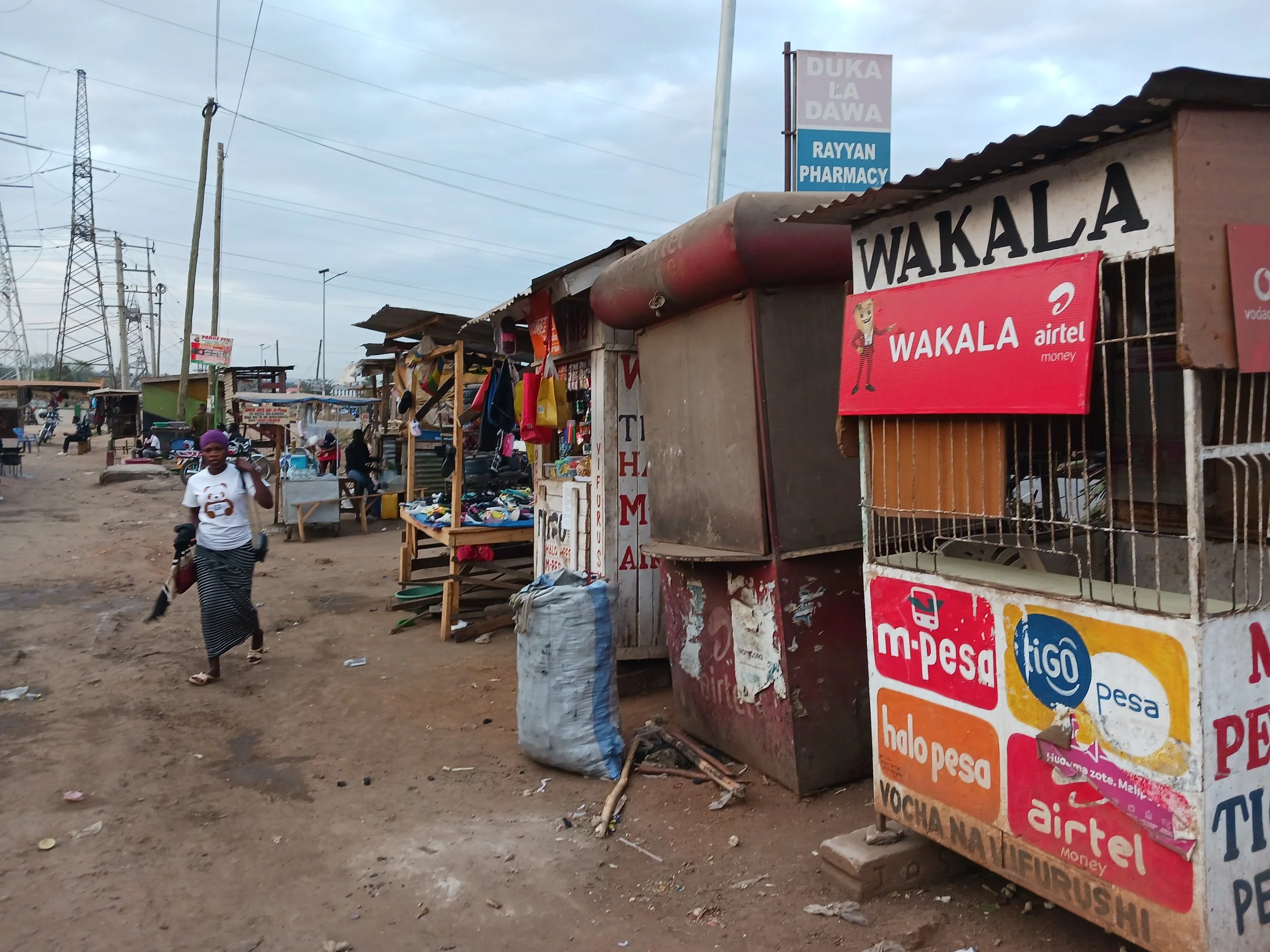“You really want to take the bus? It’s a long trip. And it’s a busy road with lots of accidents.” As usual, Thabiti, my young colleague from the University of Dar es Salaam, was looking out for my welfare, and wondering how the mzungu (a friendly, if slightly derogatory, name for a white foreigner) would fare on long-distance public transportation.
I was weighing my options for what I knew would be the longest in-country trip during my three weeks in Tanzania—from the island of Zanzibar to Morogoro, 200 km southwest of Dar es Salaam on the plain below the Southern Highlands, where I had meetings at two universities.
From the Dar ferry terminal, I could take a cab to the airport. That would take at least an hour, depending on traffic. Then I would have to wait a couple of hours, take a 45-minute flight and then a shorter drive from the airport into town. Or I could cross the city to the long-distance bus terminal. To Morogoro, the minimum travel time was four hours. Even if the flight was not delayed, I figured it might take less total time.
It was decision time. Hang out in an airport that looks like any other airport or see a little of Tanzania from the bus window, and have a chance to write about it? It was no contest. “I’ll take the bus,” I told Thabiti.
“Well, at least let me drive you to the terminal and make sure you get the right one.” I willingly agreed.
It’s estimated that more than 500 buses a day leave Dar’s massive and newly constructed bus terminal for destinations all over the country. On Thabiti’s advice, I bought a ticket from the Abood bus company, which has a decent record for safety, cleanliness and being relatively on time.
The usual bus question about departure and waiting times is wonderfully irrelevant because Abood has departures to Morogoro every 30 minutes during the day, and the buses are usually full. There’s rail service to Morogoro but the trains are infrequent, so for ordinary Tanzanians without cars the long-distance bus is the only option. The 11,000 Tsh (shillings) fare—that’s less than $3.50—seemed incredibly cheap, but of course I’m not living on a Tanzanian pay scale.
As bus companies go (and I’ve had experience with a few in Asia and Africa), Abood is well organized. It avoids the usual jostling and jockeying by issuing an assigned seat. The bus driver’s helper sticks a piece of masking tape with the seat number on your luggage as he stashes it in the cargo hold; you need to produce your ticket to reclaim it on arrival. Low-tech, but it works.
As we boarded, the vendors swarmed around, knocking on the windows. I never cease to be amazed at what you can buy at a bus terminal in a country like Tanzania, so on the return trip I made a partial inventory at the Morogoro bus station:
A large variety of snacks (sweet or salted), sodas, water, fruit slices, chicken and beef on skewers, peeled oranges, loaves of bread (not fresh—the Wonder bread variety), sunglasses, mobile phone cases and chargers, computer peripherals, watches, T-shirts, baseball caps, sandals, shopping bags and brightly colored baskets.
These are just the items I observed from the bus window. I’m sure that if I was to do a thorough tour of the terminal, the list would be much longer.
We left Dar on T1, the main road west, driving on a modern divided highway, with three lanes in each direction. I knew it was too good to last. After 10 miles or so, it narrowed to a two-lane. “It’s like this all the way to the border with Zambia,” my neighbor cheerily informed me before returning to the church service he was streaming on his phone and humming along with the hymns.
Most of the vehicles on T1 are trucks, and the majority are tankers with gasoline. Tanzania has no natural oil resources, so all petroleum products are imported, mostly from the Persian Gulf. At the port of Dar, the gasoline is piped onto trucks. Although some head north towards Arusha and the Kilimanjaro region, most take TI which leads to the capital, Dodoma, the Southern Highlands and further west. Two days later when a faculty member from Sokoine University of Agriculture gave me a ride back into town, I asked him about the tanker trucks. “That one’s going to Burundi, that one to Zambia,” he said, reading the license plates. It’s at least a two-day trip to Tanzania’s western borders on two-lane roads.
It was a stop-go trip to Morogoro. There were speed bumps, pedestrian crossings and police checkpoints, not to mention motorcyclists traveling on the wrong side of the road and wandering goats and cattle. The road is hazardous enough in daylight in good weather; I would not want to travel on it at night or during the monsoon rains.
Dar’s semi-rural districts sprawl for many miles west of the city on the coastal plain. There’s not much vegetation—the land is sandy and scrubby, with palm, banana and papaya trees, and small fields and garden plots, with maize, cassava and cabbage. Along the roadside, vendors set out plants, brightly colored pots and garden ornaments. The single-story houses are built of concrete or rough mud bricks with metal—and occasionally thatched—roofs. There are chickens and goats pecking in the yard, children playing, women with buckets and huge bundles balanced on their heads going to and from their homes, men sitting under shade trees talking and playing dominoes. In the towns, both sides of the road are lined with higgledy-piggledy, hole-in-the-wall businesses—an auto repair shop next to a beauty salon next to a sawmill and furniture maker next to a stall selling mobile phone and digital wallet top-up cards. As I often do, I jotted down some commercial signs that intrigued or amused me:
Excellent College of Health and Applied Sciences, Amazon Driving School, Sunshine Secretarial School, Reliable Auto Parts, New Forest Pub, Amazing Grocery, Destiny Hall, U-Fresh food factory, Golden Resort, New Zimbabwe Bar
After a bathroom break at Chalinze, a major road junction, we crossed a flat, arid plain with brush and small trees. About 30 miles rom Morogoro, the land became undulating and better watered. In the early evening, with the sun setting over the Southern Highlands, farmers were returning home with their herds of goats and humped cattle. The area around Morogoro is one of the most fertile in Tanzania, which is why the country’s leading agricultural university is located there. Farmers grow rice, maize, sorghum, cassava, sweet potatoes and fruit for local consumption, and sunflowers, sugar cane, sisal and tobacco as cash crops.
Morogoro is a dusty, sprawling town and a major transportation center. Here, the main highway divides, one branch heading to the political capital Dodoma, almost 200 miles to the northwest, and then to Lake Victoria, the other west through the highlands to Iringa, Mbeya and the western border. The next day, I took the Iringa road to Mzumbe University, a rural campus about a 45-minute drive from Morogoro. For a couple of miles, we got stuck behind the Mbeya Express bus. Not only did it swerve unexpectedly across the road, but passengers threw plastic water bottles out of the window. The only consolation was knowing that people collect them and make money from recycling.
I asked the Mzumbe faculty member who gave me a ride back in the afternoon about a road sign that puzzled me--Itiswell City. “That’s a religious community,” he said. “This guy gathered followers, bought land on the mountain slope for a settlement. They are trying to examine their own lives and attain their true being.” He said there were many independent churches in Tanzania, run by religious entrepreneurs who did not want to follow the rules of the mainstream denominations. “There’s no theology, just a charismatic leader,” he said. I asked him about his own faith. “I was raised in a Catholic family in the Kilimanjaro region,” he said, “but here we mix religions. I’m a Pentecostalist Catholic.” I decided to change the topic.




